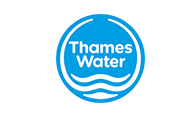A regional plan that proposes how the long-term challenges facing water supplies in South East England should be met has been published for consultation.
The draft regional plan, produced by Water Resources South East (WRSE), identifies the need for more than £15 billion of investment over the next fifty years to cut leakage, lower water use, build new water sources and transfer supplies to the water-scarce south east region from other parts of the country.
It sets out the action needed to increase the region’s resilience to drought and avoid a potential 0.8 billion litre per day shortfall in water supplies by 2035. This could rise to 2.7 billion by 2075, which is around 40% of the total amount of water currently provided each day by the six water companies that operate across the region.
The shortfall in water supplies is being driven by the need to address climate change and population growth, alongside delivering long-term improvements to the region’s environment. More than half the investment in the draft regional plan will enable water companies to reduce how much water they abstract from their existing sources, including many of the region’s chalk streams and groundwater. By 2050, more than 1.2 million litres of extra water could be left in the environment, to help it adapt to the long-term impacts of climate change.
The draft plan will also increase the resilience of the region’s water supplies to severe drought, achieving the Government’s target for water supplies to be resilient to a one in 500-year drought by 2040. This comes following one of the driest years on record, with drought declared across much of the country and the whole of South East England.
The plan includes at least halving leakage from water companies’ and customers’ pipes alongside lowering household water use by around 40 litres per person per day by 2050. Achieving this could provide more than half the water needed to secure supplies for the future, however, it is dependent on the Government taking action to introduce new policies to embed water efficiency across society.
A range of interventions are needed, including the implementation of a mandatory water label, minimum standards for all water using products and tighter standards for water efficiency for new houses in building regulations.
Between 2025 and 2035 the draft plan identifies the need to:
- Complete the construction of one new reservoir in Hampshire and start building three more in Oxfordshire, Kent and West Sussex
- Use the Grand Union Canal to transfer water from the Midlands to South East England
- Develop six water recycling schemes in Kent, Sussex, London, Hampshire and the Isle of Wight to supplement our water supplies
- Build one desalination plant in Sussex.
Between 2035 and 2075 the draft plan proposes we:
- Develop a further six water recycling schemes across the region
- Transfer more water from the Midlands and the North West using the River Severn and the River Thames
- Build desalination plants in five locations in Kent
- Build one new reservoir in East Sussex
- Store extra water underground at three sites.
The draft plan also identifies opportunities to share more water between the six water companies. By 2075, the amount of water moved around the region could increase from 400 million litres per day to 1,400 million litres per day, enabling water companies to make the best use of the water resources that are available.
Chris Murray, Independent Chair of WRSE, said: “The drought that developed over the summer affected most of the country and reinforced the need for us to invest in our collective water resources, so we mitigate the climate emergency, provide long-term protection to the environment, and avoid the far-reaching economic and societal consequences that emergency restrictions to water supplies would bring.
“The draft regional plan we have prepared for South East England makes the case for a long-term programme of investment in our water supplies. It includes delivering significant reductions to how much water is used and wasted, new reservoirs so we can capture and store more water, transfers so water can be moved within and between regions, and schemes that will safely recycle water so it can be used again. It responds directly to the challenge set by government and regulators to build resilience while improving our water environment and will not only provide enough water for future generations but deliver wider benefits to people and places.”
It is the first time that a regional plan of this nature has been prepared. It is a collaboration with the six water companies that supply water in the region, alongside regulators and stakeholders. This has included a process of reconciliation with the four other regional groups that are preparing similar plans, to identify how water could be moved between regions and make sure that together the country’s future water needs can be met. The draft regional plan will be reflected in the draft Water Resources Management Plans (dWRMPs) to be published for consultation by WRSE’s six-member water companies.
Chris added: “The draft regional has been developed through a collaborative process with water companies, regulators, other water users, customers, and stakeholders. It is critical that this collaboration continues beyond this consultation and through into the urgent planning and delivery of the schemes that will provide more water and the action needed to reduce demand, both of which are vital to securing our future water supplies.”
To find out more about WRSE’s draft regional plan and respond to the consultation visit www.wrse.org.uk the consultation is open until 20 February 2023.
Note to editors
- WRSE is an alliance of the six water companies that operate in South East England – Affinity Water, Portsmouth Water, SES Water, Southern Water, South East Water and Thames Water – working with the water industry regulators and a range of stakeholders to develop a regional plan.
- Together they supply around five billion litres of water per day to 8.2 million homes and 2 million businesses, rising to 6 billion litres per day during hot, sunny periods
- The National Infrastructure Commission published its National Needs Assessment for Water (Preparing for a drier future) in 2018 – it identified that there was a 1 in 4 chance of a serious drought occurring before 2050 and that nationally, the predicted cost of relying on emergency drought action would be £40 billion over the next 30 years Preparing for a drier future (nic.org.uk)
- WRSE is one of five regional groups developing a regional plan which was a requirement of the Environment Agency’s National Framework for Water Resources published in March 2020.
- The regional plans will be used to inform water companies Water Resource Management Plans that follow a statutory process and will ultimately be signed off by the Secretary of State.
For more information contact:
Penny Hodge, WRSE on 07887 400158 or penny@create51.com






